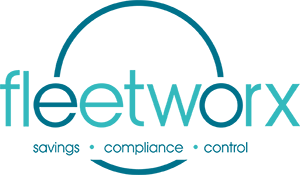09 Sep How to ensure your home-charging infrastructure supports your EV company car plans
Integrating electric vehicles into company car fleets is fast becoming a must-have for ambitious organisations who want to deliver best-in-class reward packages and attract key talent.
Although appealing, parts of this integration can be a little challenging, particularly around home-charging and electricity re-imbursement (as let’s face it, although challenging, home-charging is very important as it’s far cheaper and convenient than charging on the road!) No matter how challenging however, with some key interventions it can be introduced efficiently.
But before we look at that, let’s take a look at the continued growth of the EV market and what it means for fleet.
In June we talked about the consumer appetite for Electric Vehicles reaching a tipping point. According to the latest EY Mobility Consumer Index, 52% of respondents looking to buy a car want to buy an EV: a significant shift – the first time the number has exceeded 50% and represents a staggering rise of 22% in just 2 years!
And this isn’t the only tipping point that has been reached. EMEA Q1 ‘22 sales of Battery Electric Vehicle’s (BEV’s) increased by 53% and now make up 10% of all new vehicle sales. Staggering triple-digit percentage growth in some countries (Romania’s BEV sales grew by 408%) are an example of increasing BEV popularity. This current surge in demand is placing BEV’s beyond the critical tipping point for major adoption: suggested by Bloomberg’s research to be 5% of new car registrations being BEV. This threshold is when technological preferences rapidly flip and societal-altering shift pulls the tech into the mainstream.
New technologies follow an S-shaped adoption curve, with slow sales during the early-adopter phase and then a rapid acceleration once mainstream demand takes hold. Bloomberg suggest that once a country experiences a Quarter where 5% of new vehicle sales are fully electric, the road has been paved for the masses to follow. As a relatively mature EV market, 13 of 22 EU countries surpassed the 5% threshold, from Romania with 6.1% to Norway with 83%.
Europe is in fact so advanced that there are even two countries with a BEV total market share of more than 5%. 17.8% of all cars on the road in Norway are electric, whilst in Sweden it is 5.7%. You can read more about the State of Vehicle Electrification across EMEA in the 3rd edition of our EV Indicator.
But what does this mean for fleet?
The significance for fleet is huge. Reaching these tipping points in so many countries mean EV’s will rapidly become mainstream and widely accepted as a legitimate alternative to petrol/diesel vehicles.
This change in social acceptance means more demand from employees and a real opportunity to use EV’s as a differentiator when attracting new talent. It will however require an integration strategy that ensures EV’s are introduced sensibly, with specialist support to manage elements, particularly around home-charging provision and domestic electricity reimbursement.
Even though demand for BEV’s is strong, and becoming increasingly more so, our experience tells us that the supply chain has yet to catch up with these new demands and is using legacy systems to introduce BEV’s.
This poses several challenges for fleet owners who are attempting to integrate EV’s into fleet structures that aren’t used to the added complexity of home-charging and how to handle electricity reimbursement.
We have identified six flashpoints that we see when implementing home-charging, with the interventions that we believe will mitigate these issues.
#1 To multi-bid or single-bid, that is the question!
To multi-bid or single-bid is the perennial conundrum for fleet operators – do you go down the more complex but potentially more rewarding route of multi-bidding, where you can horse-trade each lessor’s offer against one another to get the best price, or do you build a valuable relationship with one lessor and use volume and commitment to negotiate a great deal. It’s a delicate balance, but using experienced operators such as Fleetworx can ensure the resulting contracts are right for the needs of the fleet.
However, throw BEV’s into the mix and it becomes even more complex. Home-charging infrastructure becomes a consideration, whilst electricity reimbursement solutions must also be factored in so that drivers are being correctly compensated for charging at home – the most convenient and cheapest means of keeping the cars on the road. All this means it is no longer as straightforward as selecting the cheapest lessor on the day, the day-to-day operations of the fleet must also be considered.
Intervention – employ an experienced supply chain management company such as Fleetworx to consider the most appropriate way to take your needs to market; ensuring the selected lessor’s have the infrastructure to support the unique needs of BEV’s and the subsequent changing fleet dynamic.
#2 The great lessor mash-up
Although the pace with which BEV’s are being accepted as a viable alternative to petrol/diesel is increasing, the support infrastructure is not quite keeping the same pace. Some EMEA countries, such as UK, Norway and Italy, have developed a robust charging network and have fewer than 100 electric vehicles per fast charging point, however other countries such as Belgium and Denmark have more than 200 electric vehicles per fast charging point. (to understand more about the state of electrification across EMEA download the 3rd Edition of the EV Indicator). This inconsistency is also played out among lessors who have not yet grasped the need to incorporate solutions for home-charging and domestic electricity reimbursement, offering a fragmented attempt at delivering “the complete service”.
In many markets we are finding these services to be in their infancy, with lessors yet to identify robust partnerships. This makes their offer incomparable across markets, making comparison difficult and consistent solutions hard to come by.
Intervention – it is important to get as close to “the complete service” as possible, placing a strategic importance on the provision of home-charging and electricity reimbursement support. Failing to fold this into the lessor service agreement will quickly lead to operational challenges and cost escalation.
#3 Charger contracts compulsory!
Fleet operators are quite used to the slick packaged solution offered by fuel card operators – providing all the required services under one roof, with a nice simple invoicing stream.
Unfortunately, this is not quite the reality for home-charging infrastructure and electricity reimbursement solutions. At best, some markets do have providers who offer such services across multiple lessors, but these are relatively few and may require separate contracts and invoicing streams to be established, not an easy task in our opinion. Whilst at worst, each lessor will have a separate solution, offering no synergies to their customers and a cumbersome contractual and invoicing process.
Intervention – options in each market need to be fully researched and an onboarding process needs to be planned. Quite often this will mean direct contracts with charger providers, adding another layer of complexity to the fleet category. Using a specialist intermediary such as Fleetworx will ensure all the options are explored and the contracts are constructed to benefit the client as much as possible, with ongoing contract management.
#4 Poorly structured EMEA providers
Although it is necessary to provide home-charging and domestic electricity reimbursement solutions for BEV company car owners, the current market for these services is fragmented, causing inconsistencies and implementation challenges. This becomes more apparent when a fleet operates with centralised policy and practice.
Intervention – until the market matures and best practice prevails it will be necessary to review the options in each market on an individual basis. This will add a layer of complexity to systems that are built around centralised policy, however Fleetworx is able to manage contract negotiation and ensure each is managed closely according to the needs of the local market.
# 5 Local leaders are king
Local entrepreneurial specialists are taking advantage of the growing demand for charging solutions and filling the space that, so far, larger organisations have failed to address. This means that solutions are entering the market at different stages of development, offering different products and services in each market. Different Government legislation, the standard of local grid infrastructure and inconsistent minimum technology standards means the development is sporadic and as a result the sophistication of the solution may well be hamstrung for some time.
Intervention – dealing with individual suppliers and setting up contracts and invoicing processes across many different markets can be challenging and resource intense. It requires systems and focus that can makes huge demands on the fleet category. Fleetworx systems are designed to manage contracts and handle invoices so that the supplier delivers what they should and to the expected terms, freeing up fleet stakeholders to focus on building fleet excellence and not worrying about the myriad challenges of handling numerous small suppliers.
#6 Very light on “low-touch”
Except for the Netherlands, where public infrastructure is comprehensive and the charger technology deployed to a universal standard, we expect to see many suppliers competing for their place in the market for some years to come. Inevitably, demand will drive the continued sophistication of the products and services to the point where all lessors will be able to offer integrated solutions for their clients. Until such time the immature nature of the market will produce disparate solutions requiring effort and resource to integrate to a company car fleet; the benefit of low-touch service offerings not yet being available.
Intervention – the lack of low touch offerings means folding a sufficient charging and reimbursement solution into a BEV policy will require expertise and focus, not least to ensure a degree of consistency to the pricing and SLA’s. Intermediaries such as Fleetworx help develop and maintain these relationships and ensure the contracts and billing match company policy as close as possible.
Fleetworx work with numerous clients on their EV integration strategy, helping them introduce suitable EV models and plan the charging infrastructure to keep the fleet mobile.
To discuss effective EV integration then please call Graham Rees or Tom Osborne on +44(0) 1926 353 300 or complete this form and we will contact you.
Back to Blogs Back to Case Studies List


Sorry, the comment form is closed at this time.